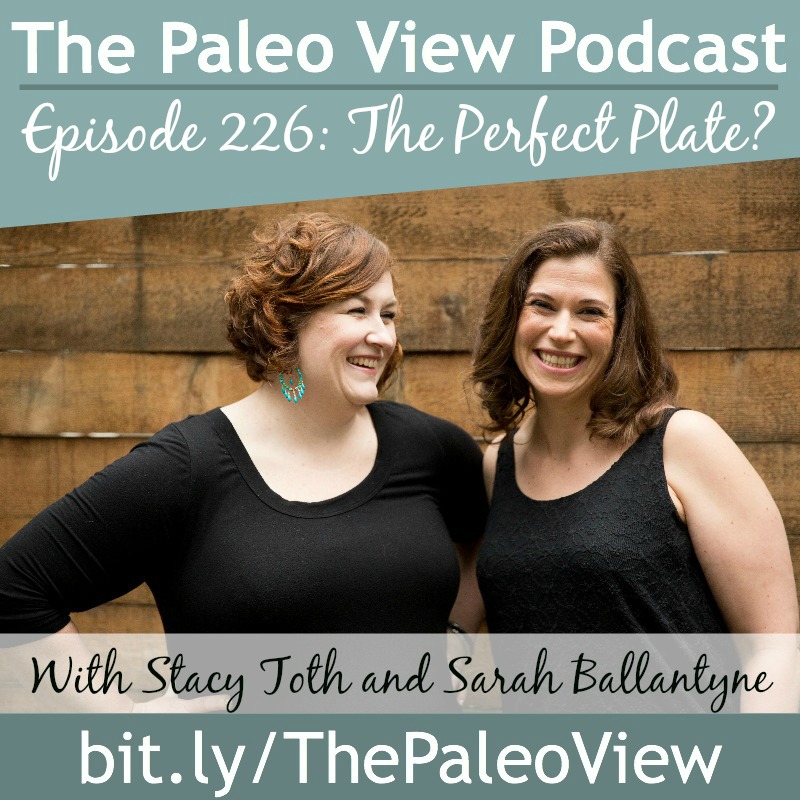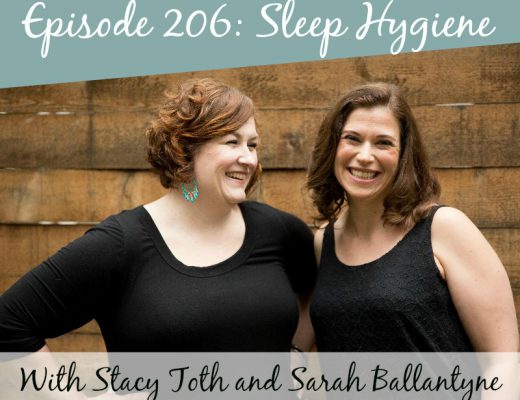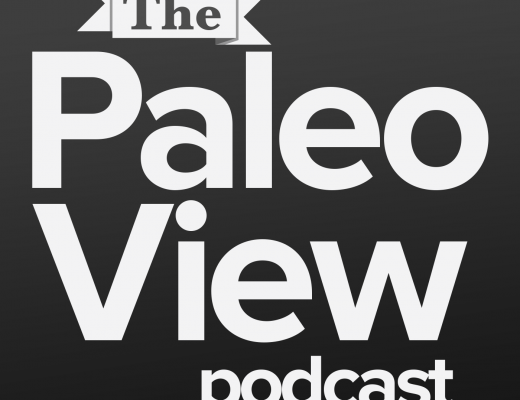Ep. 226: The Perfect Plate?
In this episode, Stacy and Sarah discuss whether different foods should never be eaten together.
Click the picture above to be taken to iTunes
or download and listen by clicking the PodBean Player below
![]()
If you enjoy the show, please review it in iTunes!
The Paleo View (TPV), Episode 226: The Perfect Plate?
- Intro (0:00)
- News and Views (0:40)
- Stacy is feeling better, but Sarah is catching up from taking care of a sick kid!
- Sarah now has a real Christmas tree, following in Stacy’s footsteps. Stacy and Matt have a tradition of cutting their own tree with the boys, now 11 years strong!
- Sarah’s philosophy is “Do what feels good to you, with guidance from scientific research,” words we can all live by!
- This week’s topic: Food combining! (10:04)
- A 14 year old girl has asked this question about food combining, an idea from other alternative diet communities about not eating some food with other foods.
- We had Mira and Jayson Calton on our show, and they have ideas about food combining as well. In particular, Stacy remembers Mira talking about spinach being high in oxalic acid, and therefore counteracting all the nutrients in the meal you are eating.
- Oxalates and Phytates are antinutrients that bind to other nutrients, rendering them unable to be processed in the body.
- A healthy gut microbiome can liberate those nutrients later.
- But it’s only the acid that is able to bind to minerals. Usually in foods these compounds are already bound up, and therefore unable to bind to nutrients in other components of your meal.
- Our question is about ideas like only eating eating fruit by itself and building a “proper plate”.
- Caroline (14 years old) asks, “What do you think about properly combined meals? Meaning no more than one concentrated food per meal which is anything other than fruit or vegetable. And only eating fruit on an empty stomach, raw? And what about about egg yolks. Said that eggs should only be eaten raw… And that scrambling was the worst way to have them; that would damage their cholesterol?” (17:21)
- We encourage people to look at the source of information, including us! Examine where they’re getting their ideas and why because anyone can type anything on the internet.
- There are a lot of signaling hormones in the digestive system that lead you to believe that meals are best with a variety of foods:
- Digestion is a process of breaking food down into smaller and smaller pieces until you get to small molecules the body can use.
- It starts in the mouth with chewing, which is mechanical digestion, and saliva, which has enzymes like salivary amylase to begin the chemical digestion
- Food then goes to the stomach where stomach acid and enzymes that break down protein
- The small intestine receives this chyme, which activates signals to various organs to do their work, like the pancreas and gall bladder.
- The small intestine has three parts: Duodenum, Jejunum, and Ileum
- The large intestine has most of the gut bacteria and is where fermentation happens. Everything that is unable to be digested forms stool
- Hunger hormones are released all along the way.
- Adiponectin lets the brain know how much energy stores there are, as does leptin and insulin
- Cholecystokinin increases when we eat fats. It’s the fastest hormone that tells the brain to stop eating. This is why eating fat helps with satiety. It also slows digestion to give enzymes time to work. It signals for release enzymes to be released that break down all macronutrients.
- And because its a problem when protein enzymes have no protein to break down, it seems like pairing fat and protein is a great idea.
- Oxyntomodulin supresses hunger when eating in the presence of protein and carbohydrates and slows digestions
- Peptide YY signals to the pancreas to stop producing enzymes and reduces hunger while helping the colon to absorb water and electrolytes.
- Glucagon-like Peptide 1 tells the brain to stop eating in response to fat, protein and carbohydrates from the last part of the intestine.
- Ghrelin is the most famous hunger hormone. When it is high, it signals the body to eat. It is secreted by the stomach when it is empty. It is kind of the opposite of leptin. Glucose, protein and fiber have the biggest signalling effect on ghrelin.
- For more on hunger hormones, see Sarah’s post here.
- Because these all work in tandem, it seems that a diverse and balanced meal is the best way to go. There is no special “fruit-only” system at all.
- And often some detrimental effects are found to disappear when other foods are also consumed. Like the link between red meat and cancer. See Sarah’s post on this here.
- Liz Wolfe talked about synergystically using food to be nutrient sufficient.
- Some vitamins need fat to be absorbed so your fat free salad dressing isn’t helping.
- Because of Stacy’s lack of gallbladder, she gets indications that eating some single foods alone don’t work for her. Especially for breakfast.
- The other part of the question is about cooking food. Does cooking destroy things?
- Microwaves don’t break down nutrients any more than other cooking methods do. See Sarah’s post on microwaves.
- While some nutrients are degraded by cooking, other nutrients are formed. Plus, cooking begins digestion and is helpful to you.
- Humans started using fire about 1.5 million years ago and by 800,000 years ago, most food was being cooked.
- Evolutionary biologists tend to believe that cooking was the important adaptation that allowed us to become modern humans because it gave us extra energy stores to grow big brains and improve tool use.
- Cooking unravels proteins so the digestion doesn’t have to. This is very useful for the body and allows more nutrient absorption.
- The only thing the body can’t reform is Vitamin C, but cooking only breaks down about 10% of the Vitamin C
- Protein is best cooked most of the time.
- Fat does break down at very high heat, and only when isolated, i.e. cooking flax oil will oxidize it. Cooking flax seeds won’t oxidize at the same heat.)
- Browning on meat isn’t carcinogens, but char is carcinogenic. But eating vegetables will usually eliminate the carcinogenic effect.
- Eating a lot of vegetables helps to make sure the carcinogens are eliminated and your immune system working to take out cancer cells.
- Make sure you get Vitamin D, get enough sleep, reduce stress, and eat veggies to stay health. Have we mentioned how much Sarah is into vegetables?
- Science now saying that perhaps we should be eating up to 8 servings of vegetables a day.
- Fiber is the best, by the way, and it’s also high in veggies. It’s especially important for keeping your gut microbiome healthy.
- Be mindful to put things back into your diet to take care of the nutrients you are eliminating from your diet.
- There are a lot of pseudoscience whackadoos out there that will sell you something for their own gain, not because they actually think their odd ideas will help you. Be careful out there!
- Outro (58:07)





